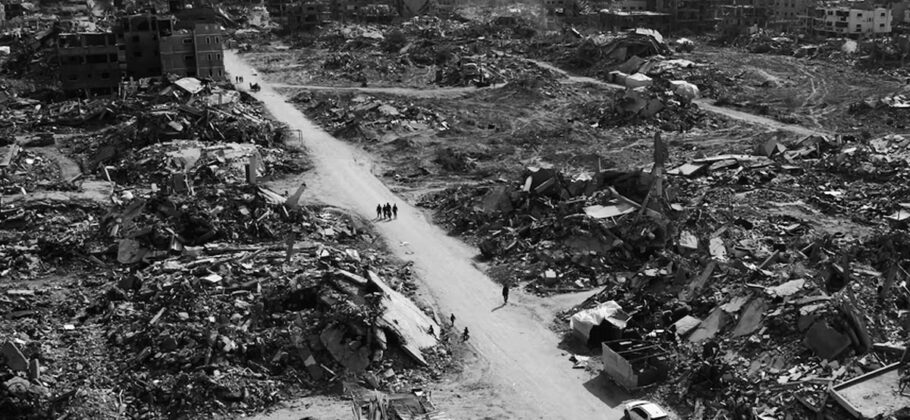The October 2025 cease-fire in Gaza is being paired with an economic experiment. Instead of putting all hope in a political deal, leaders are testing a plan that uses money and infrastructure to change incentives. The idea is simple to describe but hard to execute. If Gaza becomes a vital link in a trade corridor that connects India, the Gulf, Israel, and Europe, then war becomes unprofitable and peace becomes valuable.
At the Sharm el-Sheikh summit, the United States, Israel, Egypt, and several Gulf states met to build momentum behind this vision. The plan draws on the India–Middle East–Europe Economic Corridor, known as IMEC, which was launched in 2023 and then stalled when the region erupted again. The new bet is that rebuilding Gaza as a logistics and manufacturing node can bring IMEC back to life and give all parties a reason to keep the guns silent.
The blueprint: GREAT, phases, and conditional money
Documents tied to a proposed Gaza Rebuild and Economic Acceleration Trust, or GREAT, describe a demilitarized Gaza run by a technocratic body with international backing. Funding would arrive only when certain benchmarks are met. Those include clear land titles, weapons surrendered, and auditing rules that reassure investors. Disputes would be handled by an offshore arbitration model similar to Jersey, which is designed to make outside capital feel protected.
Trump’s 20-point Gaza plan builds around the same logic. Phase one targets core services such as water, power, and hospitals, listed at about 20 billion dollars. Later phases extend to ports, rail, industrial parks, and smart city zones that link directly to regional supply chains. The plan includes a proposed “MBS Ring” highway that ties Gaza into Saudi and Israeli logistics spines. There are also rumors of an electric vehicle assembly site. The core claim is that if Gaza is wired into profitable routes, then stability becomes a daily business requirement rather than a diplomatic wish.
Gulf capitals see an opportunity to hedge against Iranian influence and to secure transit dominance. Egypt wants to restore Suez traffic and reduce Red Sea risk. India wants faster and cheaper routes to Europe. The United States wants a viable alternative to China’s Belt and Road. The design tries to align these interests with step-by-step conditional disbursements so that progress releases money and backsliding stops it.
Egypt signals a condition: progress on Palestine
Cairo is supportive of connectivity projects, but it has drawn a bright line. Egypt’s foreign minister Badr Abdelatty said, “Connectivity is very important as part of a final settlement of the Palestinian cause,” and warned that escalation can “hinder the cooperation, the connectivity.” He also noted the Red Sea attacks cut Suez transits by about 60 percent and said, “We are paying a heavy price.” Those remarks underline a political reality. IMEC will not advance unless the Palestinian question is addressed in a durable way, and security for shipping is restored.
The rebuild math
Independent assessments show the scale of the challenge. A World Bank, U.N., and E.U. interim assessment estimates 53 billion dollars in reconstruction and recovery needs, with housing accounting for more than half of total damage. It puts physical damage near 30 billion dollars and economic losses around 19 billion dollars. Clearing 41 to 47 million tons of rubble is a project on its own, and lifeline systems such as health, water, and transport need major repair. Prices in Gaza have jumped sharply, and output has collapsed, which means basic recovery requires logistics access, security, and cash.
UNDP and UNESCWA warn that the war has set back development in Gaza by as much as 69 years. They project poverty in the State of Palestine rising to about 74 percent in 2024, with unemployment near 50 percent without policy changes. UNDP Administrator Achim Steiner cautioned, “Even if humanitarian aid is provided each year, the economy may not regain its pre-crisis level for a decade or more.” ESCWA’s Rola Dashti added, “It is high time to end the suffering and bloodshed,” and called for a solution that delivers “peace, dignity, and… sustainable development.” Their modeling shows that early recovery only works if restrictions are lifted, revenues are restored, and investment moves beyond relief into productive activity.
Energy and trade risks that sit outside Gaza
Broader regional shocks can derail even the best-built projects. Brookings analysis highlighted how energy market spikes and shipping disruptions ripple through inflation, growth, and central bank policy. Red Sea attacks pushed carriers around the Cape of Good Hope, drove up freight rates, and rattled schedules. An opening in Gaza helps the corridor logic, but it does not remove oil and shipping risk, especially if Iran or its partners see opportunity in sabotage.
Security: the unresolved core
Hamas has been degraded but not disarmed and rejects full surrender. Israel insists disarmament must be immediate and complete. Weapons buy-backs and international stabilization forces are ideas on paper, not tested systems in Gaza. Any technocratic authority will also need perceived legitimacy. Tony Blair has been floated as a governance figure, but his role is viewed with suspicion in parts of the Arab world. Without an authority that Palestinians accept, construction contracts will not translate into consent.
A panel of analysts at Arab Center Washington DC argues GREAT is a top-down scheme that strips Palestinians of agency. Executive Director Khalil E. Jahshan calls the 38-page text “a fraudulent scheme” that aims to “shield Israel from the consequences of its criminal and disastrous policies.” He argues the plan turns “voluntary displacement” into a slow version of ethnic cleansing and puts Gaza under a foreign trusteeship for a decade.
Senior fellow Yousef Munayyer says the proposal has “zero chance of being implemented,” describing the linked aid architecture as “a murderous and profit-driven scheme that cloaks itself in humanitarianism.” Assal Rad contends the plan “excludes Palestinians from planning their own future,” and says no external authority can be legitimate without consent. Annelle Sheline adds that the document keeps ultimate security in Israeli hands and treats West Bank style control as a model, which, in her view, erases Palestinian agency.
Imad K. Harb, focusing on Gulf buy-in, notes the plan courts investors with “glitzy designs” and roads named for Gulf leaders. He doubts U.S. or European public money will be available at scale and concludes that only Gulf treasuries could fund the venture if they choose to underwrite a plan that “effectively erases the question of Palestine.”
What must go right for the strategy to hold
• Local legitimacy: Palestinians need a meaningful voice in governance, land titling, security, and labor rules. Without this, projects will face resistance even if they are financed.
• Security with boundaries: An enforcement mechanism must be credible, time-bound, and subject to oversight. Otherwise, investment will be seen as cover for indefinite control.
• Conditionality that moves, not freezes: Milestones should be tough but achievable. If a single incident can halt funds for months, schedules will slip and trust will collapse.
• Trade access in practice: Materials and people must pass checkpoints at predictable rates. Ports, rail heads, and factories cannot operate if inputs get stuck.
• Regional commitments that survive politics: Gulf funding pledges, Egyptian facilitation, Indian and European demand, and Israeli approvals all need to survive cabinet changes and elections.
• Rubble and basics first: Measured progress on debris removal, restored megawatts, and reopened hospitals will signal that the plan delivers more than renderings.
Early indicators to watch
- Debris clearance tonnage month by month, and the share of neighborhoods reconnected to power and potable water.
- Hospital and clinic capacity restored, not just announced, with verifiable staffing.
- Import throughput for cement, steel, transformers, and medical equipment, with transit times that show improvement.
- Awarded and financed concessions for port, rail, and industrial zones, not just memorandums of understanding.
- Labor permits and wage data that show real jobs for Gazans.
- Independent polling on governance trust and perceptions of fairness in land and compensation.
The wager in plain words
The strategy tries to replace endless arguments with cranes, payrolls, and contracts. It bets that economic indispensability can anchor peace where diplomacy failed. If it delivers both development and dignity, it could reset how postwar recovery is done. If it builds assets without agency, it will not survive the first shock.
As Egypt’s Badr Abdelatty put it, “Connectivity is very important,” but only as part of a real settlement. As UNDP’s Achim Steiner warned, relief alone cannot rebuild an economy. Those two ideas frame the choice ahead. The corridor can work only if people, not just projects, are at the center.





